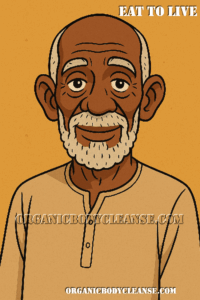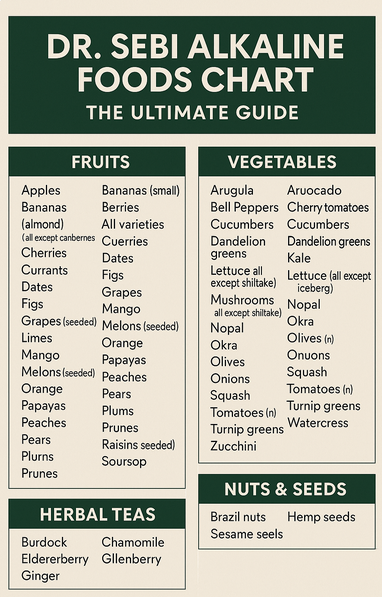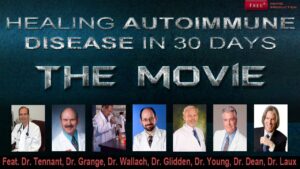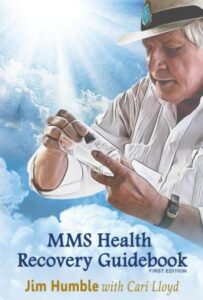100 plant-based meals and recipes to inspire your cooking adventures:
Dr. Sebi-Eat To Live
How Can I Buy Gold | Silver (Click Link) https://rawdoggtv.com/how-can-i-buy-gold
- Chickpea Curry
- Lentil Soup
- Stuffed Bell Peppers
- Vegan Pad Thai
- Quinoa Salad with Roasted Veggies
- Black Bean Tacos
- Sweet Potato and Black Bean Chili
- Vegan Mac and Cheese
- Hummus and Veggie Wraps
- Buddha Bowls
- Cauliflower Buffalo Wings
- Zucchini Noodles with Pesto
- Spaghetti with Lentil Bolognese
- Vegan Pizza with Cashew Cheese
- Jackfruit Pulled “Pork” Sandwiches
- Roasted Chickpea and Avocado Toast
- Miso Soup with Tofu
- Grilled Portobello Mushrooms
- Vegan Shepherd’s Pie
- Thai Green Curry with Tofu
- Falafel Wraps
- Vegan Pancakes
- Chia Pudding
- Butternut Squash Soup
- Mushroom Risotto
- Cabbage Stir-Fry
- Vegan Tacos with Walnut “Meat”
- Beetroot Hummus Bowl
- Vegan Sushi Rolls
- Tempeh Stir-Fry
- Roasted Vegetable Lasagna
- Carrot Ginger Soup
- Veggie Spring Rolls with Peanut Sauce
- Spinach and Chickpea Stew
- Vegan Caesar Salad
- Sweet Potato Burgers
- Eggplant Parmesan
- Coconut Curry with Vegetables
- Avocado Pasta
- Vegan Burrito Bowls
- Moroccan Lentil Stew
- Roasted Brussels Sprouts with Balsamic Glaze
- Stuffed Acorn Squash
- Vegan Ramen
- Grilled Corn and Black Bean Salad
- Vegan Nachos with Cashew Queso
- Tofu Scramble
- Creamy Tomato Basil Soup
- Cauliflower Fried Rice
- Roasted Garlic and White Bean Dip
- Spaghetti Squash with Marinara
- Vegan Chili Dogs
- Pumpkin Soup
- Curried Chickpea Salad Sandwiches
- Green Smoothie Bowls
- Vegan Meatballs
- Loaded Sweet Potatoes
- Quinoa and Black Bean Stuffed Avocados
- Broccoli Cheddar Soup (Vegan)
- Chickpea Pancakes
- Vegan Gnocchi with Pesto
- Red Lentil Dahl
- Stuffed Mushrooms
- Vegan French Toast
- Thai Peanut Noodles
- Ratatouille
- Vegan Tiramisu
- Roasted Red Pepper Hummus
- Vegan Stuffing
- Veggie Kebabs with Tahini Sauce
- Acai Bowls
- Spiced Lentil and Spinach Soup
- Vegan Sloppy Joes
- Grilled Eggplant Sandwiches
- Cauliflower Tacos
- Soba Noodle Salad
- Vegan Potato Salad
- Chickpea and Spinach Curry
- Roasted Sweet Potato and Kale Salad
- Vegan Banana Bread
- Creamy Mushroom Stroganoff
- Black Bean and Corn Salsa
- Vegan Breakfast Burritos
- Butternut Squash Risotto
- Stuffed Zucchini Boats
- Vegan Chocolate Mousse
- Greek Orzo Salad
- Cauliflower Steaks
- Chickpea and Avocado Salad
- Sweet Corn Chowder
- Vegan Enchiladas
- Spaghetti with Garlic and Olive Oil
- Roasted Beet Salad
- Vegan Apple Crisp
- Tempeh Bacon BLT
- Spinach Artichoke Dip
- Curried Sweet Potato Soup
- Quinoa-Stuffed Bell Peppers
- Vegan Cheesecake
- Black Bean Brownies
100 Vegan PlantBased Vegetarian Meal Ideas
Breakfast (1-20)
1. **Avocado Toast** with cherry tomatoes and chili flakes.
2. **Overnight Oats** with almond milk, chia seeds, and berries.
3. **Tofu Scramble** with turmeric, spinach, and bell peppers.
4. **Smoothie Bowl** with banana, mango, spinach, and granola.
5. **Vegan Pancakes** with maple syrup and fresh fruit.
6. **Chia Pudding** with coconut milk and mango.
7. **Vegan Breakfast Burrito** with black beans, salsa, and avocado.
8. **Sweet Potato Hash** with onions, peppers, and smoked paprika.
9. **Vegan French Toast** with almond milk and cinnamon.
10. **Quinoa Breakfast Bowl** with almond butter, banana, and hemp seeds.
11. **Vegan Breakfast Sandwich** with tofu, lettuce, and vegan mayo.
12. **Banana Bread** with walnuts and cinnamon.
13. **Vegan Yogurt Parfait** with granola and mixed berries.
14. **Buckwheat Porridge** with almond milk and maple syrup.
15. **Vegan Breakfast Muffins** with blueberries and oats.
16. **Vegan Shakshuka** with tofu and spiced tomato sauce.
17. **Apple Cinnamon Oatmeal** with walnuts.
18. **Vegan Breakfast Tacos** with refried beans and avocado.
19. **Peanut Butter Banana Toast** with chia seeds.
20. **Vegan Breakfast Sausage** (made with lentils and spices).
Lunch (21-40)
21. **Vegan Buddha Bowl** with quinoa, roasted veggies, and tahini dressing.
22. **Chickpea Salad Sandwich** with celery and vegan mayo.
23. **Lentil Soup** with carrots, celery, and tomatoes.
24. **Vegan Caesar Salad** with crispy chickpeas.
25. **Stuffed Bell Peppers** with rice, beans, and salsa.
26. **Vegan Sushi Rolls** with avocado, cucumber, and carrots.
27. **Sweet Potato and Black Bean Tacos** with lime crema.
28. **Vegan Ramen** with mushrooms, tofu, and miso broth.
29. **Quinoa Salad** with roasted vegetables and lemon dressing.
30. **Vegan BLT** with tempeh bacon and avocado.
31. **Vegetable Stir-Fry** with tofu and soy sauce.
32. **Vegan Lentil Loaf** with mashed potatoes.
33. **Vegan Cobb Salad** with tempeh bacon and avocado.
34. **Vegan Mac and Cheese** with cashew sauce.
35. **Vegan Chili** with beans and cornbread.
36. **Vegan Falafel Wrap** with hummus and tahini sauce.
37. **Vegan Pizza** with cashew cheese and veggies.
38. **Vegan Pad Thai** with rice noodles and peanuts.
39. **Vegan Burrito Bowl** with rice, beans, and guacamole.
40. **Vegan Greek Salad** with tofu feta.
Dinner (41-60)
41. **Vegan Spaghetti Bolognese** with lentils.
42. **Vegan Shepherd’s Pie** with mashed sweet potatoes.
43. **Vegan Curry** with coconut milk and chickpeas.
44. **Stuffed Acorn Squash** with wild rice and cranberries.
45. **Vegan Lasagna** with cashew ricotta.
46. **Vegan Mushroom Risotto** with arborio rice.
47. **Vegan Stuffed Shells** with spinach and tofu.
48. **Vegan Enchiladas** with black beans and salsa.
49. **Vegan Pho** with rice noodles and tofu.
50. **Vegan Paella** with saffron and vegetables.
51. **Vegan Lentil Curry** with basmati rice.
52. **Vegan Eggplant Parmesan** with marinara sauce.
53. **Vegan Thai Green Curry** with tofu and vegetables.
54. **Vegan Pot Pie** with puff pastry and veggies.
55. **Vegan Gnocchi** with tomato basil sauce.
56. **Vegan BBQ Jackfruit Sandwiches** with coleslaw.
57. **Vegan Zucchini Noodles** with pesto.
58. **Vegan Stuffed Peppers** with quinoa and beans.
59. **Vegan Lentil Dahl** with naan bread.
60. **Vegan Sushi Bowl** with rice, avocado, and cucumber.
Snacks & Sides (61-80)
61. **Roasted Chickpeas** with smoked paprika.
62. **Vegan Guacamole** with tortilla chips.
63. **Vegan Spring Rolls** with peanut sauce.
64. **Vegan Hummus** with veggie sticks.
65. **Vegan Stuffed Mushrooms** with breadcrumbs.
66. **Vegan Kale Chips** with nutritional yeast.
67. **Vegan Buffalo Cauliflower Wings**.
68. **Vegan Spinach Artichoke Dip**.
69. **Vegan Sweet Potato Fries**.
70. **Vegan Onion Rings** with crispy batter.
71. **Vegan Bruschetta** with tomatoes and basil.
72. **Vegan Deviled Potatoes** (instead of eggs).
73. **Vegan Trail Mix** with nuts and dried fruit.
74. **Vegan Energy Balls** with oats and dates.
75. **Vegan Flatbread** with olive oil and herbs.
76. **Vegan Pita Chips** with hummus.
77. **Vegan Stuffed Grape Leaves** (Dolmas).
78. **Vegan Cornbread** with flaxseed.
79. **Vegan Garlic Bread** with vegan butter.
80. **Vegan Potato Salad** with mustard dressing.
Desserts (81-100)
81. **Vegan Chocolate Cake** with coconut frosting.
82. **Vegan Banana Ice Cream** (nice cream).
83. **Vegan Chocolate Chip Cookies**.
84. **Vegan Cheesecake** with cashews.
85. **Vegan Brownies** with walnuts.
86. **Vegan Apple Crisp** with oats.
87. **Vegan Pumpkin Pie** with coconut cream.
88. **Vegan Rice Pudding** with cinnamon.
89. **Vegan Chocolate Mousse** with avocado.
90. **Vegan Carrot Cake** with cream cheese frosting.
91. **Vegan Peanut Butter Cups**.
92. **Vegan Cinnamon Rolls**.
93. **Vegan Lemon Bars** with shortbread crust.
94. **Vegan Blueberry Muffins**.
95. **Vegan Tiramisu** with coconut cream.
96. **Vegan Matcha Latte Cupcakes**.
97. **Vegan Strawberry Shortcake**.
98. **Vegan Pecan Pie**.
99. **Vegan Coconut Macaroons**.
100. **Vegan Chocolate Avocado Pudding**.
Breakfast
1. **Avocado Toast with Nutritional Yeast** – Smashed avocado on whole-grain bread, sprinkled with nutritional yeast and a pinch of chili flakes.
2. **Chia Pudding with Berries** – Chia seeds soaked in almond milk overnight, topped with fresh strawberries and blueberries.
3. **Vegan Pancakes** – Fluffy pancakes made with flour, baking powder, and oat milk, served with maple syrup.
4. **Tofu Scramble** – Crumbled tofu sautéed with turmeric, spinach, and bell peppers for a hearty breakfast.
5. **Overnight Oats** – Rolled oats mixed with coconut milk, chia seeds, and topped with sliced banana and almonds.
Lunch
6. **Chickpea Salad Sandwich** – Mashed chickpeas with vegan mayo, celery, and dill, served on whole-grain bread.
7. **Quinoa Buddha Bowl** – Quinoa base with roasted sweet potatoes, kale, and a tahini dressing.
8. **Lentil Soup** – Red lentils simmered with carrots, tomatoes, and cumin for a warming bowl.
9. **Vegan Sushi Rolls** – Nori wrapped around sushi rice, avocado, cucumber, and pickled carrots.
10. **Falafel Wrap** – Homemade falafel balls with hummus, lettuce, and tomato in a whole-wheat wrap.
Dinner
11. **Spaghetti with Marinara** – Whole-grain spaghetti tossed in a rich tomato sauce with garlic and fresh basil.
12. **Vegan Stir-Fry** – Tofu, broccoli, snap peas, and carrots stir-fried with soy sauce and sesame oil over rice.
13. **Stuffed Bell Peppers** – Bell peppers filled with a mix of black beans, corn, and spiced quinoa.
14. **Mushroom Risotto** – Creamy Arborio rice cooked with vegetable broth and sautéed mushrooms.
15. **Vegan Shepherd’s Pie** – Lentils and veggies topped with mashed potatoes and baked until golden.
Snacks
16. **Hummus and Veggie Sticks** – Homemade hummus with carrot, cucumber, and celery sticks.
17. **Energy Balls** – Dates, oats, and peanut butter blended into bite-sized snacks.
18. **Roasted Chickpeas** – Crispy chickpeas seasoned with paprika and garlic powder.
19. **Kale Chips** – Baked kale leaves drizzled with olive oil and sea salt.
20. **Fruit Smoothie** – Blended banana, spinach, frozen mango, and almond milk.
Here are some of the most searched plant-based meals and recipes:
- Vegan Mac and Cheese – A creamy, dairy-free twist on the classic comfort dish.
- Chickpea Curry – Rich, flavorful, and packed with protein.
- Jackfruit Pulled “Pork” – A plant-based alternative that mimics the texture of shredded meat.
- Tofu Stir-Fry – Quick, versatile, and loaded with veggies.
- Vegan Pancakes – Fluffy, egg-free pancakes perfect for breakfast.
- Cauliflower Buffalo Wings – A crispy, spicy snack or appetizer.
- Stuffed Sweet Potatoes – Filled with beans, veggies, and spices.
- Vegan Tacos – With fillings like lentils, mushrooms, or walnut “meat.”
- Buddha Bowls – Customizable bowls packed with grains, veggies, and sauces.
- Plant-Based Chili – A hearty, warming dish with beans and vegetables.
100 Vegan PlantBased Vegetarian Meal Ideas
Understanding Dr. Sebi’s Philosophy
 Dr. Sebi, born Alfredo Bowman, was a self-taught herbalist. He was not a medical doctor. His central philosophy is that disease can only exist in an acidic environment. He believed that the root cause of all disease is the accumulation of mucus, which compromises the body’s organs and creates this acidic state.
Dr. Sebi, born Alfredo Bowman, was a self-taught herbalist. He was not a medical doctor. His central philosophy is that disease can only exist in an acidic environment. He believed that the root cause of all disease is the accumulation of mucus, which compromises the body’s organs and creates this acidic state.
His solution, known as the African Bio-Mineral Balance, aims to restore the body’s natural alkaline state by consuming specific foods and herbs. He referred to these approved foods as “electric” or “alkaline,” believing they cleanse the body at a cellular level, eliminate mucus, and rejuvenate damaged cells.
Key tenets of his philosophy include:
- Alkalinity: Eating foods that promote an alkaline state in the body.
- Non-Hybrid Foods: Consuming only natural, non-hybridized foods. Dr. Sebi believed that man-made, hybrid foods are unnatural and detrimental to health.
- Cellular Cleansing: Using specific herbs and a strict diet to detoxify the body.
The Dr. Sebi Alkaline Foods Chart: The Guide
The “Dr. Sebi Alkaline Foods Chart,” more accurately called his Nutritional Guide, is a very restrictive list of approved foods. If a food is not on this list, it is not recommended for consumption. The diet is entirely plant-based (vegan).
Here is a summary of the types of foods you will find on the chart:

Approved Vegetables
- Amaranth greens (Callaloo)
- Avocado
- Bell Peppers
- Chayote (Mexican Squash)
- Cucumber
- Dandelion greens
- Garbanzo beans (Chickpeas)
- Izote (Cactus flower/leaf)
- Kale
- Lettuce (all, except Iceberg)
- Mushrooms (all, except Shiitake)
- Nopales (Mexican Cactus)
- Okra
- Olives
- Onions
- Sea Vegetables (Wakame, Dulse, Nori)
- Squash
- Tomato (Cherry and Plum/Roma only)
- Tomatillo
- Turnip greens
- Watercress
- Zucchini
Approved Fruits
A key rule is to only eat fruits with seeds. Seedless fruits are considered unnatural.
- Apples
- Bananas (Burro or the smallest original banana)
- Berries (all types, except cranberries)
- Cantaloupe
- Cherries
- Currants
- Dates
- Figs
- Grapes (seeded)
- Limes (Key Limes are preferred)
- Mangoes
- Melons (seeded)
- Oranges (Seville or sour oranges preferred)
- Papayas
- Peaches
- Pears
- Plums
- Prickly Pear
- Raisins (seeded)
- Soft Jelly Coconuts
- Soursop
- Tamarind
Approved Grains
- Amaranth
- Fonio
- Kamut
- Quinoa
- Rye
- Spelt
- Teff
- Wild Rice
Approved Nuts & Seeds
- Brazil Nuts
- Hemp Seeds
- Raw Sesame Seeds & Tahini Butter
- Walnuts
Approved Oils
- Avocado Oil
- Coconut Oil (unrefined)
- Grapeseed Oil
- Hempseed Oil
- Olive Oil (unrefined)
- Sesame Oil
Approved Sweeteners
- Agave Syrup (from cactus)
- Date Sugar
Approved Spices & Seasonings
- Achiote
- Basil
- Bay Leaf
- Cayenne Pepper
- Cloves
- Dill
- Habanero
- Onion Powder
- Oregano
- Pure Sea Salt
- Sage
- Tarragon
- Thyme
Approved Herbal Teas
- Burdock Root
- Chamomile
- Elderberry
- Fennel
- Ginger
- Raspberry
How to Incorporate These Foods Into Your Daily Diet
Adopting the Dr. Sebi diet is a significant lifestyle change due to its restrictive nature.
1. Start with Familiar Swaps:
- Instead of coffee, start your day with an approved herbal tea like ginger or fennel.
- Swap your regular table salt for pure sea salt.
- Use date sugar or agave syrup instead of refined white sugar.
- Replace common wheat bread with spelt or rye bread.
2. Plan Your Meals:
- Breakfast: A smoothie made with burro bananas, berries, and hemp seeds. Another option is cooked quinoa with fresh peaches and a drizzle of agave.
- Lunch: A large salad with mixed greens (no iceberg), cucumber, cherry tomatoes, onions, and avocado, topped with a dressing made from olive oil and key lime juice. Add garbanzo beans for protein.
- Dinner: A stir-fry using approved vegetables like bell peppers, mushrooms, and zucchini with wild rice or quinoa. Season with approved spices like cayenne, thyme, and onion powder.
- Snacks: A handful of walnuts, an apple, or sliced cucumbers with sea salt and lime.
3. Hydrate Properly:
- Drink plenty of spring water throughout the day. Dr. Sebi’s methodology advises against drinking tap or distilled water.
4. Go All-In or Transition Slowly:
- Some people find success by going “cold turkey” and adopting the entire food list at once.
- Others may find it easier to transition by first eliminating all animal products, then processed foods, and finally narrowing their food choices to only those on the approved list.
Important Considerations and Scientific Perspective
While many people report feeling better on this diet, it’s crucial to be aware of the following:
- Medical Disclaimer: Dr. Sebi was not a medical doctor, and his claims of curing major diseases like AIDS and cancer are not supported by peer-reviewed scientific evidence and have been legally challenged.
- Body pH: The human body tightly regulates its blood pH level (around 7.4) through the kidneys and lungs, regardless of diet. While food can change the pH of urine (acid-ash hypothesis), it does not change the pH of your blood.
- Nutritional Gaps: This diet is extremely restrictive and eliminates entire food groups. This can lead to potential deficiencies in nutrients like Vitamin B12 (found only in animal products), calcium, vitamin D, and omega-3 fatty acids if not carefully managed.
- Benefits Explained: The positive effects people experience are likely due to the diet’s emphasis on whole, unprocessed plant foods and the exclusion of alcohol, refined sugar, and processed items. These are principles of generally healthy eating.
Before making any drastic changes to your diet, especially one this restrictive, it is highly recommended that you consult with a registered dietitian or a medical doctor to ensure it is safe and appropriate for your individual health needs.
==================================================================================================================================
A Deep Dive into the Dr. Sebi Alkaline Foods Chart
For those seeking a holistic approach to wellness, the “Dr. Sebi Alkaline Foods Chart” has emerged as a significant, albeit controversial, guide to dietary healing. This guide, central to the philosophy of the late Alfredo Bowman, also known as Dr. Sebi, posits that an alkaline-focused diet can detoxify the body, restore cellular health, and combat a range of diseases. While a specific video titled “Dr. Sebi Alkaline Foods Chart: The Ultimate Guide” remains elusive, the core principles and food lists of this diet are widely disseminated and form the basis of a distinct nutritional path.
At its heart, Dr. Sebi’s philosophy is rooted in the idea that disease can only thrive in an acidic environment. By consuming foods that are naturally alkaline and avoiding those that are acidic and mucus-forming, he believed the body could achieve a state of optimal health and purge itself of ailments. This approach, also referred to as the African Bio-Mineral Balance, emphasizes the consumption of non-hybrid, plant-based foods that are rich in essential minerals.
The Core Principles of the Dr. Sebi Diet
Adherents to the Dr. Sebi diet follow a strict set of rules designed to maintain an alkaline state in the body. These foundational principles include:
- Strictly Adhere to the Food Guide: Only foods listed on the official Dr. Sebi nutritional guide are to be consumed. This list is highly specific and excludes many common fruits, vegetables, and grains.
- Abundant Hydration: A minimum of one gallon of natural spring water is recommended daily to aid in detoxification and cellular hydration.
- Elimination of Animal Products: The diet is entirely vegan, prohibiting all meat, poultry, fish, and dairy products.
- Avoidance of Hybrid Foods: Dr. Sebi contended that hybrid foods, which are cross-bred for desirable traits, are unnatural and detrimental to health.
- No Alcohol or Processed Foods: Alcohol, along with processed and packaged foods containing artificial ingredients, preservatives, and refined sugars, is strictly forbidden.
- Specific Cooking Methods: The use of microwaves is discouraged, with an emphasis on preparing foods by boiling, baking, or steaming to preserve their nutritional integrity.
- Focus on Seeded Fruits: Fruits consumed should contain seeds, as seedless varieties are considered unnatural.
The Dr. Sebi Alkaline Food Chart: A Glimpse
The “Dr. Sebi Alkaline Foods Chart” is divided into several categories, outlining the approved foods for consumption. While the complete and official list is extensive and subject to some variation among followers, here is a representative sample of commonly accepted foods:
Vegetables:
- Amaranth greens (callaloo)
- Avocado
- Bell peppers
- Chayote (Mexican squash)
- Cucumber
- Dandelion greens
- Garbanzo beans (chickpeas)
- Izote (cactus flower/leaf)
- Kale
- Lettuce (all, except iceberg)
- Mushrooms (all, except shiitake)
- Nopales (prickly pear cactus)
- Okra
- Olives
- Onions
- Sea vegetables (wakame, dulse, nori)
- Squash
- Tomato (cherry and plum)
- Tomatillo
- Turnip greens
- Zucchini
Fruits (Seeded):
- Apples
- Bananas (the smallest ones, or burro bananas)
- Berries (all varieties, except cranberries)
- Cantaloupe
- Cherries
- Currants
- Dates
- Figs
- Grapes (seeded)
- Limes (key limes)
- Mangoes
- Melons (seeded)
- Oranges (Seville or sour)
- Papayas
- Peaches
- Pears
- Plums
- Prickly Pear (cactus fruit)
- Raisins (seeded)
- Soft jelly coconuts
- Soursop
- Tamarind
Grains:
- Amaranth
- Fonio
- Kamut
- Quinoa
- Rye
- Spelt
- Teff
- Wild rice
Nuts and Seeds:
- Hemp seeds
- Raw sesame seeds
- Tahini butter (from raw sesame seeds)
- Walnuts
- Brazil nuts
Oils:
- Avocado oil
- Coconut oil (unrefined)
- Grapeseed oil
- Hempseed oil
- Olive oil (unrefined)
- Sesame oil
Herbal Teas:
- Burdock
- Chamomile
- Elderberry
- Fennel
- Ginger
- Raspberry
- Tila
Purported Benefits and Scientific Scrutiny
Proponents of the Dr. Sebi diet report a wide array of benefits, including significant weight loss, increased energy levels, improved digestion, clearer skin, and relief from chronic conditions such as hypertension, diabetes, and autoimmune disorders. The emphasis on whole, unprocessed plant-based foods aligns with general dietary recommendations for improved health.
However, the Dr. Sebi diet has also faced considerable criticism from the scientific and medical communities. Critics point to the highly restrictive nature of the diet, which can lead to nutritional deficiencies in essential vitamins and minerals like vitamin B12, calcium, and iron. The central premise of altering the body’s pH through diet is also a point of contention, as the body has robust mechanisms to maintain a stable blood pH regardless of food intake. Furthermore, many of the health claims made by Dr. Sebi and his followers are not supported by peer-reviewed scientific evidence.
Incorporating the Alkaline Diet into Your Life
For those interested in exploring the Dr. Sebi alkaline diet, a gradual approach is often recommended. Starting by incorporating more of the approved foods into your daily meals while slowly reducing the consumption of prohibited items can make the transition more manageable. Meal prepping, experimenting with new recipes using the approved ingredients, and finding a supportive community can also be beneficial.
It is crucial for anyone considering this or any other highly restrictive diet to consult with a healthcare professional or a registered dietitian to ensure their nutritional needs are being met and to discuss any potential health implications. While the “Dr. Sebi Alkaline Foods Chart” offers a compelling vision of natural healing, a balanced and well-informed approach is essential for achieving long-term health and well-being.
#VeganRecipes #PlantBasedMeals #VegetarianCooking #MeatlessMeals #HealthyEating #PlantPowered #VeganFoodies
#VegetarianLifestyle #EcoFriendlyEating #DairyFreeMeals #VeganNutrition #PlantBasedDiet #VeganCooking
#VegetarianRecipes #VeganForLife #PlantBasedLiving #VeganFoodLove #VeganMeals #WholeFoodVegan
#GlutenFreeVegan #VeganDesserts #VeganSnacks #PlantBasedRecipes #HealthyVegan #CleanEating #VeganMealPrep
#VeganIngredients #VeganBreakfast #VeganLunch #VeganDinner #MeatFreeMonday #VeganFamilyMeals
#NutritiousVegan #VeganComfortFood #PlantBasedProtein #VeganSuperfoods #VeganFoodLovers #EasyVeganMeals
#VeganCookingTips #EcoVegan #VeganKitchen #PlantBasedLifestyle #SimpleVeganRecipes #HealthyPlantBased
#VeganInspiration #VeganOnTheGo #PlantBasedGoodness #ConsciousEating #WholeFoodPlantBased
25 Bottled Water Brands You Need To STAY AWAY From (10 To Drink)
How Can I Buy Gold | Silver (Click Link) https://rawdoggtv.com/how-can-i-buy-gold







